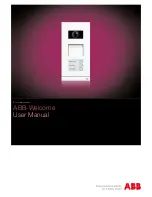
54 Function Description
WAGO I/O System Compact
751-9301 Compact Controller 100
Manual
Version 1.1.0, valid from FW Version 03.08.07(20)
no specific routing entry exists for their destination address and destination mask
are sent to this default gateway.
Default Gateway:
If the value “default” is entered in the “Destination Address” field, a default
gateway, also called a default route, is defined. The value “0.0.0.0” must then be
set in the “Destination Mask” field.
Route:
If an IP address or IP address range is entered in the “Destination Address” field,
then all network data packets that are directed to the network address or network
address range are sent to the gateway address corresponding to the entry.
If the IP address of the gateway is outside the IP address space that the
controller can reach, the associated route is not enabled.
A metric is assigned to each routing entry. If multiple routing entries are
configured for the same destination address and destination mask, the metric
specifies how the routing entries are prioritized. In this case, routing entries with a
lower value for the metric are preferred over routing entries with a higher metric
value.
The metric value of the configured routing entries can be specified for the
controller. The default value for the metric is 20. Besides the manually
configurable routes, default gateways can also be set via DHCP replies. All
default gateways transferred via DHCP are assigned a permanent metric value of
10.
Metric example:
A controller obtains its IP configuration via a DHCP server and receives both the
IP address and the network mask 192.168.1.10/24. Furthermore, a gateway with
IP address 192.168.1.2 and metric value 20 is set up on the controller. Therefore,
when no specific routing entry exists for the target address of network data
packets, the controller sends them to gateway 192.168.1.2. Besides the IP
address and network mask, the DHCP server is now instructed to allocate a
default gateway of 192.168.1.1. The controller gives this default gateway a metric
value of 10. Therefore, the default gateway received via DHCP is preferred over
the manually configured gateway.
The routing entries are used to specify which gateways the network data packets
are sent. If the controller is running in switched mode and only has one network
interface, all network traffic passes through this network interface. If the controller
is running in separated mode or contains a modem, it has more than one network
interface. Therefore, it is possible for a network data packet to arrive at the
controller on one network interface and depart on a different network interface.
This forwarding between different network interfaces must be explicitly enabled; it
is disabled when the controller is delivered. To enable the forwarding, “Routing
enabled entirely” must be enabled in the “General Routing Configuration” group.
In this case, the controller can function as a router.
















































